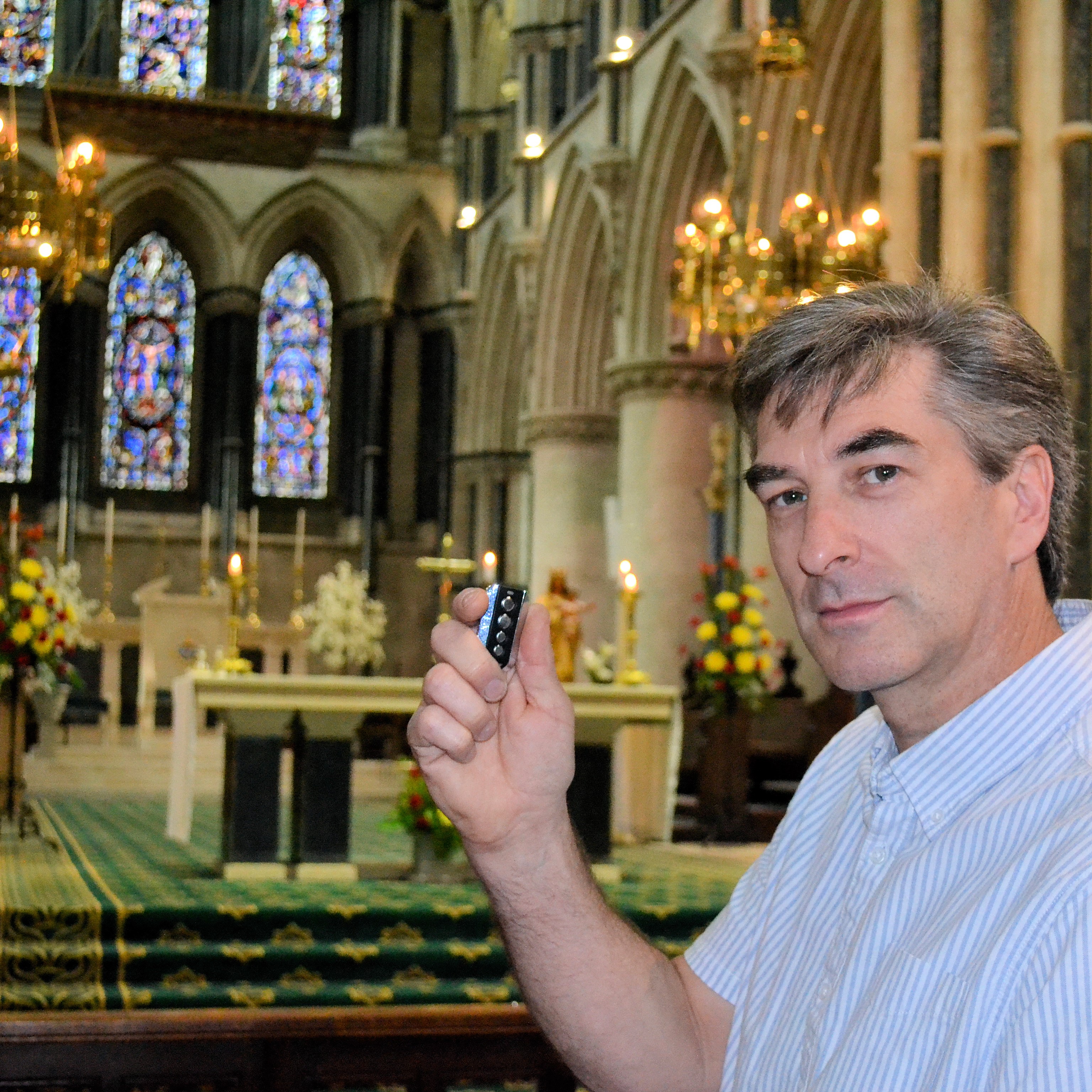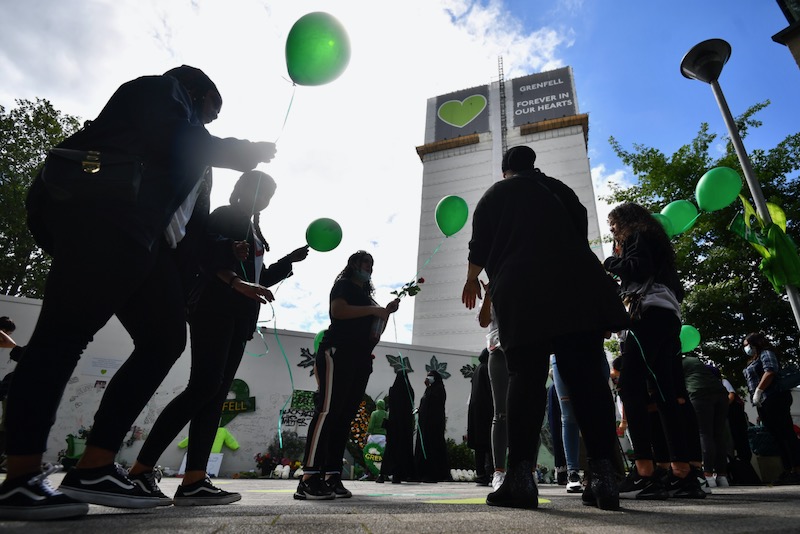It's been three years since the Grenfell Tower burned in the night skies over London's Westway. My school, All Saints Catholic College, is the second closest secondary school to the tower and, as the crow flies, lies 650 metres away. I can't believe it has been three years. But in the same breath, and particularly in the current climate, it seems like moments ago.
On the 17 June 2017, I woke at my normal “work” time of 5am to read a message that shook me. My then PA, Marian, who had lived in north Kensington her whole life had texted me: “Andrew, you need to get to school. Grenfell is on fire.”
I didn't know what Grenfell was, I had never heard of it. For a long time I felt guilty about that, until another headteacher colleague pointed out that most people don't necessarily know this kind of information.
I obviously know now that it was one of a number of tower blocks that had been built in and around the Lancaster West estate in the early 1970s. I remember running down my road to the station and then made my way to Hammersmith on the tube, only to find that the Hammersmith and City line had been closed. I knew I needed to get to work as quickly as possible, so I took a taxi. The taxi driver had to take a detour by heading towards Kensington High Street and then toward Holland Park and subsequently dropped me off at the south end of Ladbroke Grove, near Holland Park underground station.
Even though it was 6.40am, it was a swelteringly hot morning, extremely humid. I walked to the brow of the hill and looked down to see 20 maybe 30 fire engines, blue lights flashing, double parked across Ladbroke Grove. As I got closer to the engines, I could see fire men and women, lying on the streets still wearing their full kits. They weren't speaking, just lying there, ashen faced, staring into the middle distance. It was surreal. I passed Ladbroke Crescent, a small semi-circular road adorned with beautiful houses, and at the end of it in the near distance, a tower block on fire. I stood rooted to the floor, I was absolutely shocked. How could this be happening here? This was something you see happening in other parts of the world and only seen on the news. Not here.
At 7am, myself and my senior team sat down together to work out what we needed to do. There is no manual for this and there was no way in which we could have prepared. We talked about a range of key things that needed to happen including looking through pupil postcodes, making a decision about the morning science GCSE exam as well as ascertaining which staff may have been affected.
But there were two key things that were decided. The first was that we need to get the students into school and try and provide some sense of security for them. It was about providing familiarity, care and love. Secondly, and crucially, we decided to get straight out onto the streets and find the students and get them into school. Around 10 of us were out and around the streets of Ladbroke Grove from 7.10am and we were surprised at the number of students we encountered, many of whom had been awake most of the night, many of whom were highly distressed. Strangely, they were all dressed immaculately in their school uniform, heading towards us. It was distressing to see so many children frantically and repeatedly trying to call family members or friends who lived in the tower. As students entered the school, the plumes of smoke were billowing over the school playgrounds with the tower in sight and visible to all.
At 8am I phoned the exam board responsible for the GCSE exam that was laid out for all Year 11s in our school gym. What could we do? Were there any mitigating clauses in extraordinary circumstances such as these? They were clueless and also unprepared. As the headteacher and “head of centre”, I was simply told to make my own decision in line with the regulations. So I did. I decided that we would start the exam at 9.59am – the latest time possible time in the exams guidance. This allowed for my senior team to speak to every single Year 11 and ascertain whether or not they were in a fit state to sit an exam.
The majority were adamant that they wanted to. Around ten students hadn't yet arrived at school, but we had ascertained that they were safe. For some students, we found an additional room and invigilators for them. For several others, they wanted to sit the exam, but I took the decision that they couldn't. They were inconsolable; there was no way for their own sake that they could sit an exam. My morning involved several calls to the exam board, including, losing my temper at the inflexibility and lack of understanding and compassion for what was going on. For that exam, and the subsequent ones, we had to submit huge amounts of evidence regarding extenuating circumstances for these students. My deputy headteacher and the rest of the senior team spent many hours and weekends working on this. Every single child in Year 11, including those who weren't able to attend, were awarded a GCSE grade. And rightly so.
While out on morning duty I had left a voicemail on the mobile phone of Kathleen Williams, the headteacher of the St Francis of Assisi Catholic primary school situated right next to Grenfell tower. I assumed that they would not be able to open and if they wanted to have an office space to make calls and contact with families then we would make that available to them.
By lunchtime, a team from St Francis had set up a base in one of buildings and they were calling families. By mid-afternoon, we had agreed that we could fully accommodate them on the site by timetabling and rooming classes so that they could take over our maths corridor and use our library as a nursery. Within 16 hours and for the following ten days, St Francis of Assisi and our school were one on the same site. It was incredible to see how Kathleen and her team led their community through this crisis but at the same time showing such unbelievable care for the children within their school. They were dealing with loss and displacement but creating an atmosphere of love for the students. For our students, they loved having the primary school students in school, in many ways it created a distraction for them.
The following days and weeks feel like a haze three years later. Every day was completely different and the attention was huge. It was a time of planning each day as it came. The support and outpouring of desire to help was overwhelming and sometimes difficult to discern. I can't fault the support that was offered by the education teams of both the Royal Borough of Kensington and Chelsea and the Diocese of Westminster. They were in constant contact. While it was an extremely challenging time, the strength of our school staff and the solidarity of our community was pivotal.
Three years on from that fateful night and day, we occasionally see news stories that appear about Grenfell, usually hitting a full crescendo at the time of the anniversary, like this one. For headteachers like myself and my colleagues in the local area, things have changed for good. Every day since brings a new perspective. We have meetings with commissioning services, mental health services and the Grenfell education fund team. We are constantly trying to serve the survivors and bereaved in the best way possible.
Throughout history, Christian theology is littered with venomous debates about how to interpret Jesus' Gospel message with the pressing issues of the day. The only unequivocal message and non-debate around the teachings of the Gospel is Jesus' overarching and strong focus on the support for the disadvantaged and marginalised. Politicians said at the time that they can never forget what happened and that things would change for the better for those who are disadvantaged. Like the Gospel, and the school teachers and workers of north Kensington, it is imperative that the politicians demonstrate that their message can stand the test of time.
Andrew O’Neill
June 2020
Andrew O’Neill has been the Headteacher of All Saints Catholic College (formerly Sion-Manning Catholic Girls’ School) since 2016. Since that time, the school has gone from being on the brink of closure to become highly over-subscribed and developed a reputation for offering quality education.



 Loading ...
Loading ...
What do you think?
You can post as a subscriber user ...
User comments (0)